Reiterative infusions of MSCs improve pediatric osteogenesis imperfecta eliciting a pro-osteogenic paracrine response: TERCELOI clinical trial
- PMID: 33463067
- PMCID: PMC7805402
- DOI: 10.1002/ctm2.265
Reiterative infusions of MSCs improve pediatric osteogenesis imperfecta eliciting a pro-osteogenic paracrine response: TERCELOI clinical trial
Abstract
Background: Osteogenesis imperfecta (OI) is a rare genetic disease characterized by bone fragility, with a wide range in the severity of clinical manifestations. The majority of cases are due to mutations in the COL1A1 or COL1A2 genes, which encode type I collagen. Mesenchymal stem cells (MSCs), as the progenitors of the osteoblasts, the main type I collagen secreting cell type in the bone, have been proposed and tested as an innovative therapy for OI with promising but transient outcomes.
Methods: To overcome the short-term effect of MSCs therapy, we performed a phase I clinical trial based on reiterative infusions of histocompatible MSCs, administered in a 2.5-year period, in two pediatric patients affected by severe and moderate OI. The aim of this study was to assess the safety and effectiveness of this cell therapy in nonimmunosuppressed OI patients. The host response to MSCs was studied by analyzing the sera from OI patients, collected before, during, and after the cell therapy.
Results: We first demonstrated that the sequential administration of MSCs was safe and improved the bone parameters and quality of life of OI patients along the cell treatment plus 2-year follow-up period. Moreover, the study of the mechanism of action indicated that MSCs therapy elicited a pro-osteogenic paracrine response in patients, especially noticeable in the patient affected by severe OI.
Conclusions: Our results demonstrate the feasibility and potential of reiterative MSCs infusion for two pediatric OI and highlight the paracrine response shown by patients as a consequence of MSCs treatment.
Keywords: cell therapy; mesenchymal stem cell; paracrine mechanism of action; regenerative medicine.
© 2021 The Authors. Clinical and Translational Medicine published by John Wiley & Sons Australia, Ltd on behalf of Shanghai Institute of Clinical Bioinformatics.
Conflict of interest statement
The authors declare no conflict of interest.
Figures

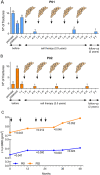
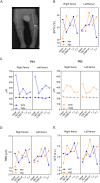

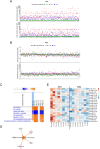
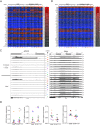
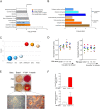
Comment in
-
Trophic effects of multiple administration of mesenchymal stem cells in children with osteogenesis imperfecta.Clin Transl Med. 2021 Apr;11(4):e385. doi: 10.1002/ctm2.385. Clin Transl Med. 2021. PMID: 33931966 Free PMC article.
Similar articles
-
Circulating TGF-β Pathway in Osteogenesis Imperfecta Pediatric Patients Subjected to MSCs-Based Cell Therapy.Front Cell Dev Biol. 2022 Feb 9;10:830928. doi: 10.3389/fcell.2022.830928. eCollection 2022. Front Cell Dev Biol. 2022. PMID: 35223854 Free PMC article.
-
The synergistic effect of NELL1 and adipose-derived stem cells on promoting bone formation in osteogenesis imperfecta treatment.Biomed Pharmacother. 2020 Aug;128:110235. doi: 10.1016/j.biopha.2020.110235. Epub 2020 May 23. Biomed Pharmacother. 2020. PMID: 32454289
-
Galunisertib downregulates mutant type I collagen expression and promotes MSCs osteogenesis in pediatric osteogenesis imperfecta.Biomed Pharmacother. 2024 Jun;175:116725. doi: 10.1016/j.biopha.2024.116725. Epub 2024 May 13. Biomed Pharmacother. 2024. PMID: 38744219
-
Mesenchymal Stem Cell Therapy for Osteogenesis Imperfecta.Clin Obstet Gynecol. 2021 Dec 1;64(4):898-903. doi: 10.1097/GRF.0000000000000656. Clin Obstet Gynecol. 2021. PMID: 34510048 Review.
-
Stem Cell Therapy as a Treatment for Osteogenesis Imperfecta.Curr Osteoporos Rep. 2020 Aug;18(4):337-343. doi: 10.1007/s11914-020-00594-3. Curr Osteoporos Rep. 2020. PMID: 32710427 Free PMC article. Review.
Cited by
-
Cellular Therapy: The Hope for Covid-19.Avicenna J Med Biotechnol. 2022 Apr-Jun;14(2):104-113. doi: 10.18502/ajmb.v14i2.8883. Avicenna J Med Biotechnol. 2022. PMID: 35633981 Free PMC article. Review.
-
Emerging Landscape of Osteogenesis Imperfecta Pathogenesis and Therapeutic Approaches.ACS Pharmacol Transl Sci. 2024 Jan 2;7(1):72-96. doi: 10.1021/acsptsci.3c00324. eCollection 2024 Jan 12. ACS Pharmacol Transl Sci. 2024. PMID: 38230285 Free PMC article. Review.
-
An exploratory open-label multicentre phase I/II trial evaluating the safety and efficacy of postnatal or prenatal and postnatal administration of allogeneic expanded fetal mesenchymal stem cells for the treatment of severe osteogenesis imperfecta in infants and fetuses: the BOOSTB4 trial protocol.BMJ Open. 2024 Jun 4;14(6):e079767. doi: 10.1136/bmjopen-2023-079767. BMJ Open. 2024. PMID: 38834319 Free PMC article.
-
The Role of Mitochondrial Homeostasis in Mesenchymal Stem Cell Therapy-Potential Implications in the Treatment of Osteogenesis Imperfecta.Pharmaceuticals (Basel). 2024 Sep 29;17(10):1297. doi: 10.3390/ph17101297. Pharmaceuticals (Basel). 2024. PMID: 39458939 Free PMC article. Review.
-
Mesenchymal stem cells in the treatment of osteogenesis imperfecta.Cell Regen. 2023 Feb 2;12(1):7. doi: 10.1186/s13619-022-00146-3. Cell Regen. 2023. PMID: 36725748 Free PMC article. Review.
References
Publication types
MeSH terms
LinkOut - more resources
Full Text Sources
Other Literature Sources
Medical
Molecular Biology Databases
Miscellaneous
